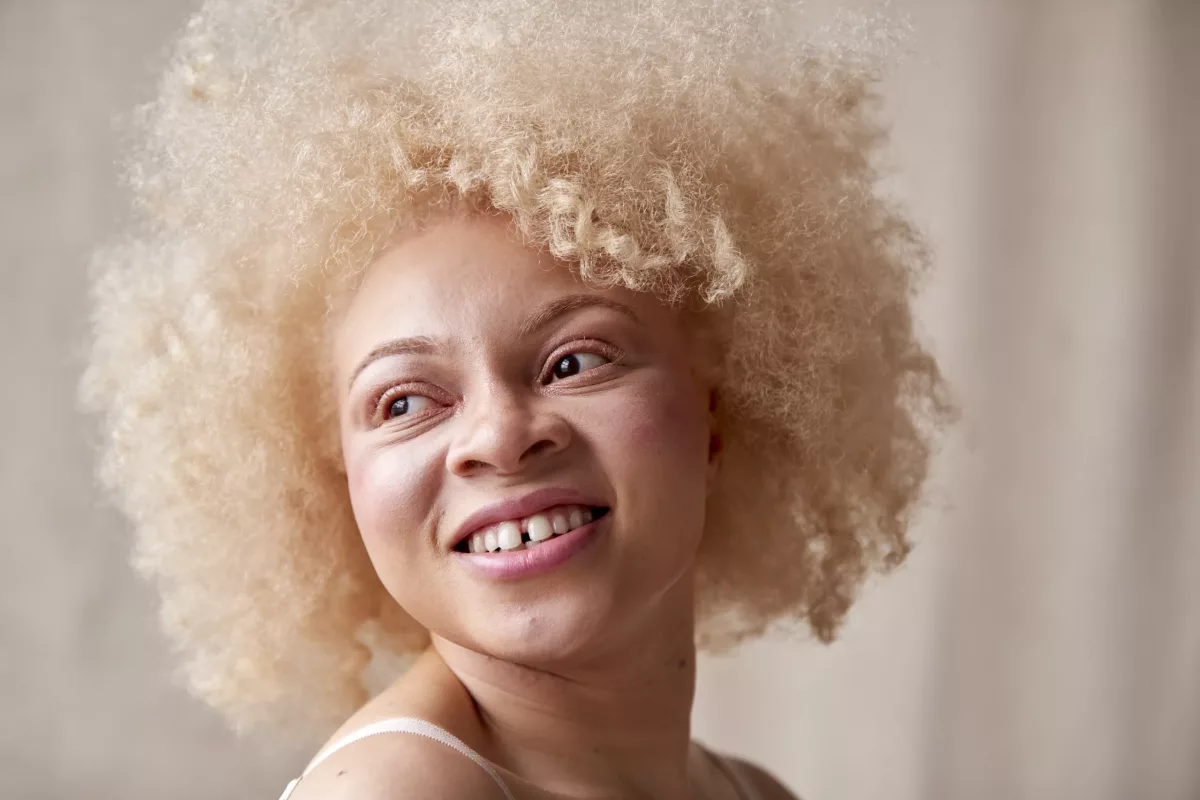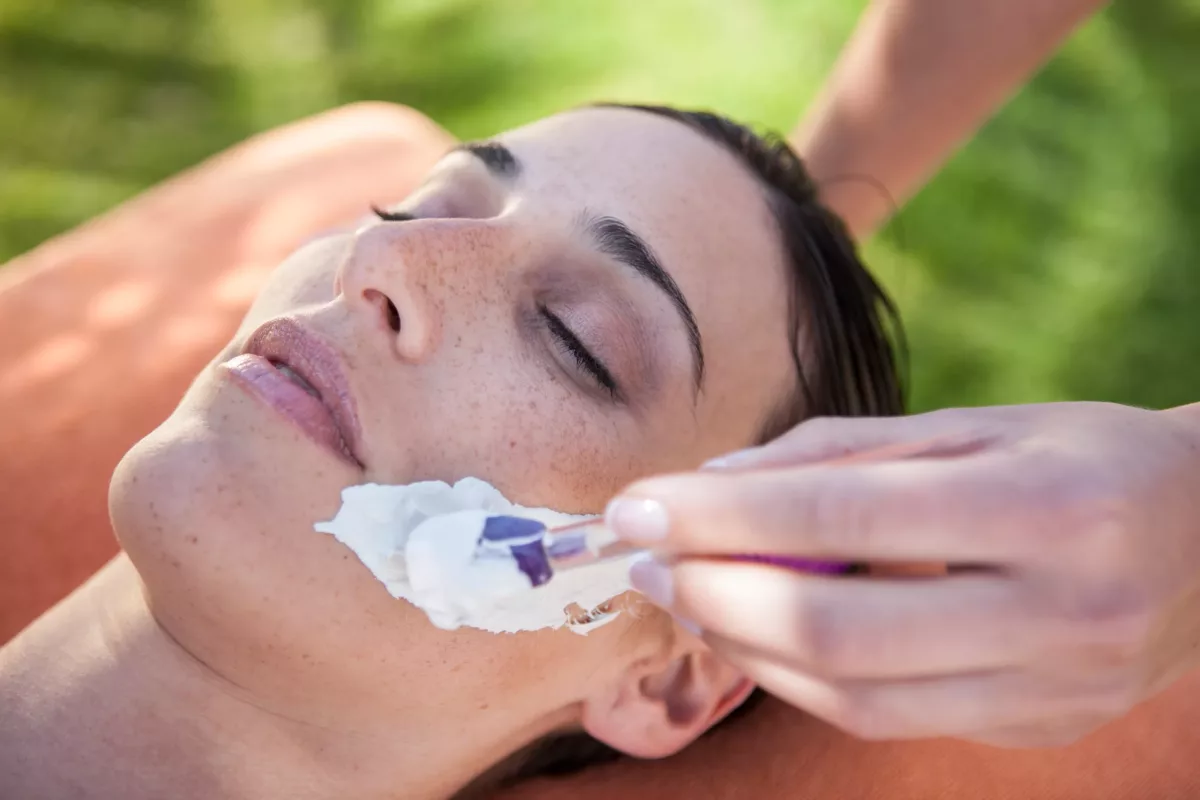The medical term albinism often refers to oculocutaneous albinism (also known as OCA). This is a group of conditions that run in families and cause reduced production of a substance called melanin. In normal circumstances, the type and amount of melanin in the body contribute to the color of the hair, eyes, and skin. It also plays an important role in the development of eye function. That’s why people with albinism may experience vision problems.
While some people have severe symptoms, others may experience some mild symptoms that affect the skin, hair, and eye color. Furthermore, those who suffer from this condition are more sensitive to sunlight and have an increased risk of skin cancer.
Unfortunately, there is no way to cure this condition. However, some treatments and self-care may help lessen the symptoms and prevent serious complications (such as cancer of the skin).
Symptoms
The symptoms of this condition usually involve the skin, hair, eye color, and vision.
Skin
The mildest form of albinism causes white hair and very light-colored skin compared to other blood relatives. Skin color is also called pigmentation, and it may range between white and brown in people with albinism. Check below some symptoms that may appear due to exposure to the sun:
- Freckles
- Moles (with or without color)
- Solar lentigines (these are large freckle-like spots)
- Sunburn
While some people may never develop skin changes, others may notice an increase in melanin levels during childhood and teen years, which may cause slight skin color changes.
Hair
Generally, the color of the hair in people with albinism ranges from very white to brown. In African or Asian descent, the hair color ranges between yellow and brown. Sometimes, the color of the hair becomes darker due to direct contact with minerals in water and other environmental factors.
Eyes
In most cases, the eyelashes and eyebrows are pale in those who suffer from albinism. However, eye color ranges from very light blue to brown and often changes with age.
Commonly, the iris (the colored part of the eye) does not have enough pigment, which causes increased light sensitivity.
Vision
The main symptom of people with albinism is vision changes. These include:
- Nystagmus (fast eye movement)
- Unusual head posture or position because it helps lessen eye movements
- Strabismus (it occurs when the eyes cannot look in the same direction and time)
- Farsightedness or nearsightedness (these vision problems cause difficulty seeing near or far objects)
- Photophobia (severe light sensitivity)
- Astigmatism (this is a condition in which the surface of the eye or the lens inside it is curved), which often causes blurred vision
- Development problems of the retina (a thin layer of tissue on the inside back wall of the eye)
- Misrouting of the optic nerve (this is a condition in which nerves do not send signals from the retina to the brain)
- Difficulty seeing things in three dimensions
- Legal blindness (it occurs when vision is less than 20/200)
- Complete blindness
If you notice that your child has color changes in hair, skin, or eyes, immediately contact your healthcare professional.
Seek emergency care if your child experiences frequent nosebleeds, easy bruising, or chronic infections because it may also indicate albinism.
Causes
Normally, there are several genes that give instructions for producing one of several proteins involved in melanin production. This substance is made by cells known as melanocytes that are found in the hair, skin, and eyes.
When a DNA mutation (change) occurs in the genes responsible for melanin production, it causes the condition. It often runs in families, and abnormal genes may pass from parents to their children. In some cases, these abnormal genes may cause a lack of melanin.
Albinism Types
- Oculocutaneous albinism (OCA) – It occurs when a child gets two copies of an abnormal gene from each parent. This is the most common type of albinism, and it involves a change in one of eight genes from OCA1 to OCA8. Generally, this condition causes reduced pigment in hair, skin, and eyes, and vision problems.
- Ocular albinism – In such cases, the condition negatively affects the vision only. One of the most common types of ocular albinism is the first type. It involves mutated genes caused by a change on the X chromosome. In most cases, this type passes from mothers to their sons (also known as X-linked recessive inheritance). Usually, this type of ocular albinism affects males.
- Albinism is related to rare hereditary syndromes – For example, Hermansky-Pudlak syndrome includes a type of OCA, bleeding and bruising, and lung and bowel diseases, or Chediak-Higashi syndrome also includes a form of OCA and immune system problems. It may also cause chronic infections and problems with the nerves and brain.
The only serious risk factor for albinism is a family history of the disease.
Complications
People with albinism may experience some complications, especially if they do not get treatment. For example:
Eyes
Vision disorders may affect learning, employment, and the ability to drive.
Skin
Almost all people with albinism have an increased sensitivity to light and the sun. However, one of the most severe complications in people with albinism is sunburn. It also significantly increases the risk of developing skin cancer.
Sometimes, skin cancer (especially melanoma) can be difficult to identify because it appears as small pink or red growths or moles. The only way to find it early is through regular checkups. In addition, most people find they have melanoma in its advanced stages.
Social and Emotional Problems
In some cases, people with this condition may experience discrimination. However, these reactions may have a negative impact on these people. They may also experience bullying, teasing, or unwanted questions about their appearance (including eyewear or visual aid tools). As a result, it may lead to poor self-esteem, stress, and social isolation.
How to Prevent Albinism?
The only way to determine whether your child may have albinism or not is genetic testing. Consult with your doctor about available genetic tests.
Unfortunately, there is no way to prevent this condition.
Diagnosis
Healthcare professionals often diagnose this condition by performing a physical and eye examination and a review of the child’s medical history.
Your child may also be referred to an ophthalmologist to check for eye and vision disorders.
Treatment
Because this condition cannot be cured, treatment focuses on lessening the symptoms and preventing serious complications. Check below some treatments often recommended by doctors:
- Eye care – This involves regular eye examinations (at least once per year), prescription lenses to improve vision, and surgery (sometimes). Doctors often recommend eye surgery to treat nystagmus.
- Skincare – It includes frequent skin examinations to check for skin cancer signs. However, there is an aggressive skin cancer type (called melanoma) that often appears as pink or red moles or growths on the skin. That’s why it is often undiagnosed until it advances.
Home Remedies
The following practices may help lessen the symptoms and improve your quality of life. For example:
- Low vision aids – These include a hand-held magnifying glass, a telescope, or a magnifier that is attached to the glasses.
- Use sunscreen regularly – It is advised to use an SPF (sun protection factor) of 30 or greater, especially if you are outdoors.
- Avoid sun exposure for long periods – For example, avoid being outside in the middle of the day, at high altitudes, or near water for a long time.
- Protective clothing – It is recommended to wear protective clothing, including long-sleeved, collared shirts, long pants, and socks.
- Eye protection – You should use dark and UV-blocking sunglasses every time you are outdoors.
Frequently Asked Questions
What is the cause of albinism?
The primary cause of this condition is mutated genes that cause a reduced production of melanin. This is a substance that plays an important role in vision and the color of the skin, hair, and eyes.
Are there any cures for albinism?
However, this condition cannot be cured. That’s why treatment focuses on lessening the symptoms and preventing serious complications (such as sunburn). If you think your child has albinism, immediately contact your physician.
What are the symptoms of albinism?
These include:
- Pale skin
- Vision problems
- Nystagmus (uncontrollable eye movements)
- Strabismus
- Skin and hair color changes
However, some people with albinism do not experience any symptoms. If you have additional questions, ask your healthcare provider.




